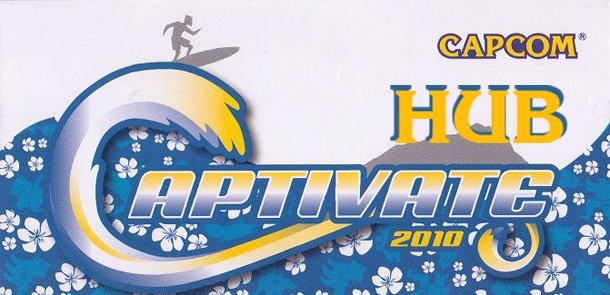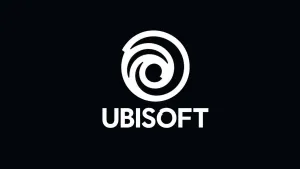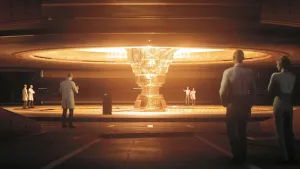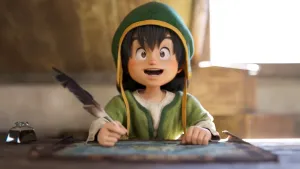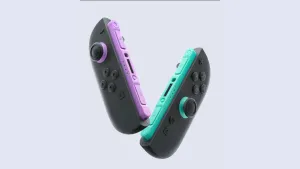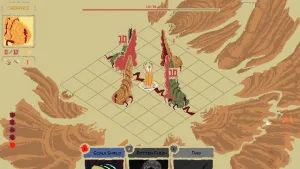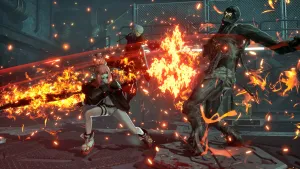Subscribe today to receive the next issue of Game Informer, featuring the Most Anticipated Games of 2026!
A Japanese Legend Travels West
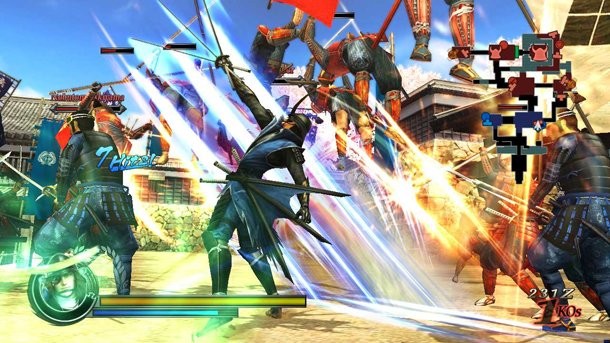
Since its inception in 2005, the Sengoku Basara series has been a
massive hit in Japan. Its diverse cast, frenzied action, and colorful
take on Japanese history have spawned a wealth of sequels, anime, manga,
and even a recurring live action play. So why haven’t you heard of this
influential series until now? Sengoku Basara: Samurai Heroes, the next
generation entry in the series, is the first game in the franchise
hitting the U.S. market.
Destined for the PlayStation 3 and Nintendo Wii, Sengoku Basara: Samurai
Heroes is a single-player action game set in 16th century Japan. The
fast-paced combat of Sengoku Basara is not unlike one of producer
Hiroyuki Kobayashi’s previous titles, Devil May Cry 4, but I found a
little more in common with Dynasty Warriors. Players take on the role of
one of a dozen charismatic Japanese leaders, plowing through droves of
enemy soldiers while jamming the attack button. With the masses of foes
rushing your character, an onscreen combo tracker, constant character
banter, and flurry of intricate sword slashes, Sengoku Basara looks very
intimidating at first glance. After some hands-on time, however, I
discovered why this game is such a huge success in the East.
Regardless of which hero you choose, the accessible controls remain the
same. Players mash away on a basic attack button while throwing in three
other special moves. Cutting down waves of ancient Japanese infantry
fills two onscreen gauges. One is Hero Time, which stops time when
activated, allowing for brief respite from the constant chaos, and an
opportunity to slay frozen foes. The other gauge is for Basara Art,
which unleashes the character’s ultimate, crowd-clearing attack. After
just a few minutes with the controls you’ll feel like a Sengoku warlord.
Speaking of warlords, the main heroes of Sengoku Basara: Samurai Heroes
come is four flavors. Ieyasu Tokugawa is the yellow-clad brawler who
uses his powerful gauntlets to chain together timed combos in an effort
to unite Japan. Hailing from the west, the brooding Mitsunari Ishida
unleashes a purple typhoon of sword slashes upon his rival Ieyasu’s
army, killing hundreds before his foes even realize he’s drawn his
katana. Masamune Date, the fierce rival of Mitsunari, clutches six
deadly blades between his knuckles, resulting in terrifying blue claws
of death. Finally, there’s the yellow-hued Yukimura Sanada, the sworn
enemy of Ieyasu, who creates wide arcs of devastation on the battlefield
with his dual spears. Though only four members of the large cast have
been revealed, the title’s gameplay variety is evident.
I spent most of my time with Ieyasu and Mitsunari, two fighters with
very different attack styles. Players execute carefully timed button
presses to chain together the supreme commander Ieyasu’s slow yet
devastating punches, while pressing an analog stick to steer the tornado
of fists. Mastering Ieyasu’s chained attacks is manageable within
minutes. Once players nail the basics, peppering special moves such as a
running dash and ground pound is a snap. Should a stray enemy threaten
to strike a blind spot, a quick tap of the left shoulder button blocks
attacks. What Ieyasu lacks in speed he more than makes up for in sheer
might.
Mitsunari is Ieyasu’s polar opposite. Quick on his feet and with a
blade, this samurai practices a sword technique which requires him to
re-sheath after each attack. When his weapon is out, flashes of purple
tear across the screen. He is so slick, in fact, that his blade
continues to rend enemies even when he turns to a new target. Unlike
Ieyasu, Mitsunari’s edge in combat comes from harassing the enemy with a
constant flurry of slashes and never allowing them a moment of respite.
Mitsunari is the clear winner in terms of coolness, and his fighting
style is a good fit for novice players who want results by mashing
buttons.
No matter which hero you play, one word describes the overall gameplay
of Sengoku Basara; fun. Nonstop action, crisp visuals, and undemanding
controls hit that sweet spot between mindless fun and light strategy.
Players must capture enemy camps to summon support troops, evade
stalking juggernauts throughout large levels, and battle rival heroes
while listening to unintentionally hilarious voice acting (e.g. “I bring
you a gift, Ieyasu…the gift of death!”). Even without the series’ deep
character progression present in the demo (Capcom says it’s on the way),
Sengoku Basara still offers a deep well of entertainment. There’s also
good news for Wii owners, as the game plays identically across PS3 and
Wii, with only the graphics taking a hit on Nintendo’s console. You’re
going to want a Classic Controller Pro, though.
What may cause Sengoku Basara: Samurai Heroes to stumble outside Japan
is its immersion in the country’s lore and looming repetitiveness.
Producer Kobayashi insists this is a fantastical take on Japanese
history for gamers who care about the country’s legends. I fear this
demographic may be too niche for the series to replicate its success
back home. The story and characters may simply be too ridiculous to
ignore for some. Additionally, despite offering dozens upon dozens of
gameplay hours across a ton of main characters, Samurai Heroes’ core
mechanic may grow tiresome for those uninterested by level progression
and upgrading weapons.
I approached Sengoku Basara: Samurai Heroes with no knowledge of the
series, and put down the controller feeling like an expert. PlayStation 3
and Wii owners alike should keep their eyes on this fun new title as
its Fall 2010 release approaches.

Get the Game Informer Print Edition!
Explore your favorite games in premium print format, delivered to your door.
- 10 issues per year
- Only $4.80 per issue
- Full digital magazine archive access
- Since 1991
